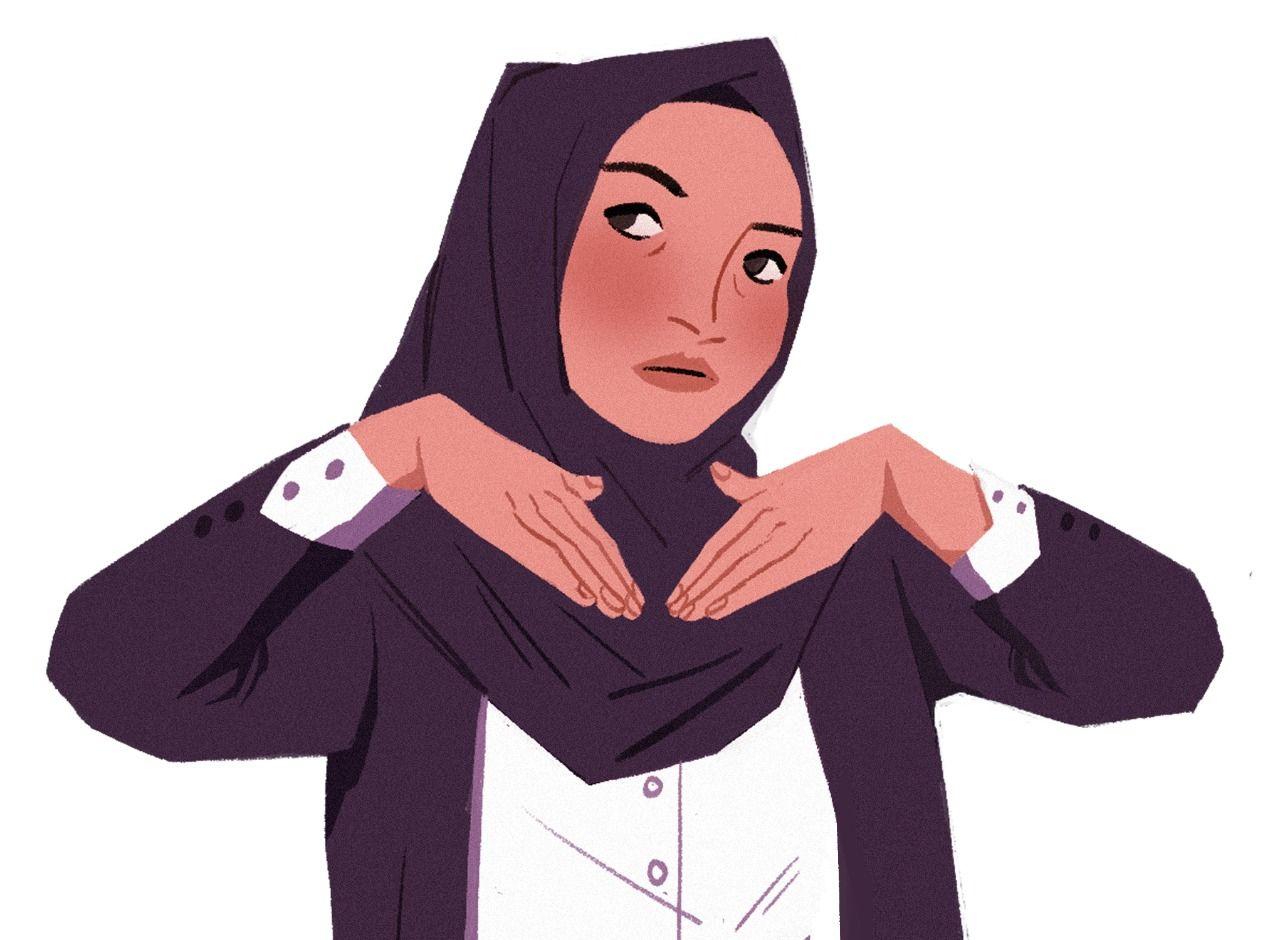Seven years ago, “Maya” was accidentally exposed to pornographic content while surfing the internet using her parents' cell phone. At the time, Maya was in sixth grade of elementary school, where she had learned about the function of reproductive organs, a subject which piqued her curiosity more. Maya then took the initiative to search more about reproductive organs on the internet, but, instead, she landed on a porn site.
"At first I didn't know it was pornography, but from there, I got to know a little bit about male and female reproductive organs," Maya, now 19, told Magdalene.
The teenager who lives in Kupang said that she only occasionally accesses pornographic content. Every time she watches a video or sees pornographic images, Maya admits that she receives new knowledge that is not taught in school, such as how to keep the reproductive organs clean and how sexual intercourse works.
“I also learned that when having sex, I have to warm up first, so I won’t get hurt during intercourse. Also, the ways or techniques in having sex to satisfy the needs of themselves and their partners,” Maya said.
Just like Maya, 16-year-old “Robi” from Bangka Belitung also learns about sexual relations through pornographic content. He accessed porn sites for personal reasons and from there, he learned how to use contraceptives.
He is also relatively lucky because his parents are open to talk about sexual education, especially since his brother is a medical worker. However, porn is still considered taboo in his family. At school, Robi only learns about puberty and reproductive system, so pornography and social media content on sexuality are "key" to his learning, though there are some drawbacks.
"Porn does not teach about what age, with whom, and what kind of relationship we can have sexual intercourse," Robi told Magdalene.
For that reason, Robi said, pornography is not enough as a learning resources. Similarly, Maya also said that pornography is not ideal enough because of the explicit violence in it. They both agreed that in addition to pornographic content, teenagers must have access to sex education from other sources, such as sexual education institutions on social media, parents, and even teachers.
Can Pornography Be a Source of Education?
A survey by Magdalene on sex education found that 16.9 percent of the 320 teenagers aged 15 to 19 in Indonesia who consumed pornography, do it to learn about sex. A total of 42.8 percent say they consume it out of curiosity, and 26.2 percent for satisfaction or personal reasons.
Not all teenagers agree that pornographic content can be used for learning. “Tita”, a 17-year-old high school student in Makassar, expressed her concerns about scenes of violence in porn that force women to commit sexual intercourse.
"You could call it rape. Even though the whole thing is intentionally set up, (it) indirectly teaches (the audience) to take opportunities in adversity," she said, referring to violent scenes in porn.
She emphasized to Magdalene that if no one accompanies, explains, or presents sexual education material, then pornographic content cannot be classified as knowledge. She added that pornographic content also presents unrealistic women's bodies, which beats the purpose of sex education.
The question of whether pornography can provide sexual education for teenagers was also asked to “Rita”, a 44-year-old housewife who works part-time as a make-up artist in Depok.
"Is there any porn now that is educational?" she asked back.
As a mother of three, aged 11, 13, and 18, Rita does not feel comfortable about discussing sexuality to her kids because she considered it taboo. However, not wanting their children to be trapped in promiscuity, Rita and her husband agreed that they should be open about discussing puberty, hygiene, and the function of reproductive organs from an early age. If school does not provide adequate knowledge, asking parents is a better alternative than porn, she added.
"In my opinion, education doesn't have to be through viewing; it's enough with the knowledge that our religion (Islam) teaches us to control our actions," she said.
Producing and consuming content featuring sexual intercourse in Indonesia is unlawful. The 2008 Law on Pornography defines pornography as a form of communication media, such as photos and videos that violate societal moral norms including ones showing sexual intercourse, masturbation, and reproductive organs.
The strict control of access to porn is not only mandated by the law, but government officials also often make it their personal agenda to wage war against porn. In 2019, Aceh Governor Nova Iriansyah declared a campaign against pornography, urging the public to join the movement.
The fight against pornography is also in the agenda of the Women's Empowerment and Child Protection Ministry in collaboration with institutions such as End Child Prostitution, Child Pornography & Trafficking of Children for Sexual Purposes (ECPAT) Indonesia. The aim is to prevent children from being exposed to and become victims of child pornography. The ministry’s website cites the Indonesian National Police’s Cyber Crime Unit as saying that there are 25,000 pornographic content circulating on the internet every month.
Sociology lecturer from the University of Indonesia, Diana Teresa Pakasi, said teens’ perception of porn as a source of information lies in the misperception that limits sexual education to sexual intercourse. In fact, she said, sexual education encompasses broad and varied topics, from reproductive health rights, sexuality, puberty, body development, relationships with people, gender, to topics about violence. These issues are also presented in stages that are age appropriate.
“If you want to understand sexual education, the aspects are very broad. It defines what it means to be human, female, and male. Through education, we also learn to understand ourselves,” said Diana, whose research focuses on the issue of Sexual and Reproductive Health Rights (HKSR).
Diana suggested that if teenagers feel that their schools do not provide adequate information on sexuality, they can seek information from institutions that are engaged in advocating evidence-based sexuality education such as the Indonesian Initiative for Changes in Access to Health (IPAS Indonesia Foundation) and Rutgers WPF Indonesia.
Also read: Cabul: Reading the Right Book about Sex
The Impact of Pornography and the Objectification of Women
Rita, the mother of three, said that if she ever found out her children consuming pornography, she would tell them that it can damage brain function. "I feel that children need to know the impact so later they would think twice before doing it," Rita said.
Similarly, Tita, the teenager, said, “After someone watches porn, they may want to pour out their lust on someone. Or people can become addicted to sex or pornographic content. Isn't content like that bad for the brain?"
Pornography and its effects on the brain, especially for teenagers who are in their growth period, is one of the negative impacts that is often highlighted. According to clinical child and adolescent psychologist Marcelina Melisa, there is no short-term impact for teens who access pornography. But in the long run, consuming pornography can lead to addiction.
“All forms of addiction damage the executive function or the front part of the human brain that is designed to seek pleasure. There are also controls that must be executed in that section, and vice versa. If there is an addiction, he will tend to ignore that control,” she said.
The addiction issue was also discussed in the cyber realm when the Twitter autobase account @bertanyarl posted message on a child who was caught with porn content in his cellphone at his kindergarten (18/11). Apparently, the the boy had mistakenly brought his parent’s cellphone, and the search history on the phone was filled with porn sites. When the boy was caught red-handed and reprimanded by the teacher, he responded with harsh words: "Ngamuk terus ngamuk terus tak perkosa sisan koe (Stop being angry or I’ll rape you)!"
When the school reported the incident to the parents, they excused it as a mere child’s behavior.
Porn’s influence on a child’s behavior is also a particular concern that Maya highlighted. On a larger scale, she argues that pornographic content can encourage someone to commit acts of sexual violence. Children or adolescents who are still looking for their identity will imitate the things they watch, especially if they are not under supervision, she said.
"Sometimes, even adults who watch porn can't control their lust and may lead them to perpetrate rape," Maya said.
Several studies have examined whether pornographic content affects the violent behavior of people who consume it. David Ludden, a Georgia Gwinnett College psychologist, cites research from Canadian psychologists on the issue at Psychology Today. The research highlights the fact that aggressive masculinity shows that there is a strong dislike towards women. However, it does not prove that men will behave sexually aggressively.
“It is undeniable that there are many men who blame women for personal problems. They also watch violent pornography to channel the aggression. However, they will not commit violence in the real world," he wrote.
Meanwhile, Diana said that pornographic content that shows sexualization of violence can have an impact on the way teenagers interpret their sexual relations and relationships. This is where the critical point lies because most pornographic content is meant to sell, not educate.
“Therefore, pornographic content cannot be separated from objectification and sexualization of women, which lead to violence and even perpetuating rape culture. I'm worried that content that objectifies violence is considered normal by teenagers," she said.
The issue of pornography showing violence and the sexualization of women was also a debate among feminists in the 1970-1980s “feminist sex wars”. One of the people that were most vocal about it was the anti-porn radical feminist Andrea Dworkin. In her book Pornography: Men Possessing Women (1981), she writes about pornography as a form of male domination and exploitation of women that does not only occur in the film scenes but also in the porn industry as a whole.
Out of this debate emerged “feminist porn,” which is pornography made by and for women and produced by feminists. The pornographic content is made not to objectify the female body and sex is presented realistically. The goal is that women can free their desires, and actors who work behind the scenes are not exploited from a financial point of view and are comfortable doing the scenes.
In Western countries, feminist porn has become more commonplace. In Sweden, for example, female porn director Erika Lust launched the Lust Cinema website, while Cindy Gallop, a British advertising consultant, created the Make Love Not Porn website. Feminist porn may not have reached Indonesia in terms of popularity. Maya, Tita, and Robi said they are not familiar with the term and believe that their friends would not know about it either.
Diana said that the idea of feminist porn that challenges patriarchal values and reclaims the space they exploited is an interesting thing. Maya concurred there will be differences in depiction of sexual intercourse because the women challenge patriarchal culture and refuse to be conquered in sexual relations.
Also read: Female Masturbation: How Should Parents Respond to It?
The Taboo of Comprehensive Sexual Education
Diana said the impact, influence of pornography on teenagers and their responses should ideally be included to inform and enrich the discussion of comprehensive sexual education.
Magdalene's survey results show that out of a total of 405 respondents, 79 percent of teens have watched pornography, while 15.1 percent have never watched pornography at all. Of the respondents who consume pornography, 35.3 percent watch it less than once a week. 33.1 percent of them have only accessed it once and 15.6 percent access it more than once a week.
However, Diana said, the taboo on talking about pornography and sexual education was an obstacle to this. If you dismantle the taboo surrounding pornography and openly talk about it, the impact and influence of pornography may be better managed. Normally, when teachers or the authorities talk about pornography, it is within the context of banning or restriction, not a discussion that can help teenagers make the best choices for their mental and physical development, Diana said.
“Sex education must also understand emotions. It can't be expected from a dogmatic and prohibitive point of view. It’s hard if it only goes one way. Education is built from the interaction between students and lecturers or teachers who facilitate it," she said.
"But even anatomical images that are not explicit and not pornographic are still considered taboo."
In Indonesia, according to Diana, this taboo is difficult to break because religion, culture, and societal norms view the topic as indecent. Therefore, there is often a fear of persecution when providing sexual education. They are afraid of being labeled as promoting immoral acts.
From teenagers, parents, teachers to public figures, resistance to talking about sex education is still driven by morality. The right way to dismantle the stigma and the resistance, then is continuously building dialogues involving all, especially with religious leaders and people who have greater influence in society.
“We must continue to engage in dialogues with public, religious figures, and other stakeholders. Furthermore, so that teenagers are comfortable in discussing it, we can optimize the approach of peer educators under close guidance,” she said.
Parents must be engaged in the effort, Diana said. She gave an example of one of the discussions with parents conducted by the non-governmental Indonesian Family Planning Association (PKBI) in Bali. In the forum, parents can discuss about topics from pornography to sex education with experts that include psychologists, sexologists, and activists on Sexual and Reproductive Health Rights.
Adolescent psychologist Marcelina said parental openness and involvement is important to create a communication space without pressure, so that children do not feel embarrassed or afraid if they have questions or are curious about sexuality. If children feel they will be blamed for asking questions, they will be reluctant to ask, which is one of the reasons why children prefer to access pornography in search of answers.
“The things that encourage children to access pornographic content are the puberty they experienced, curiosity, and other external factors, such as their friends and attractions toward other people. This reluctance to ask is also one of them," Marcelina said.
Parents’ openness to talk about pornographic content has also been in the spotlight when celebrity Yuni Shara said that she did not forbid her children from watching adult films, but would provide assistance to their children instead. This was conveyed in a conversation on model Venna Melinda’s YouTube channel last July. Yuni said there are many kinds of pornographic content that can be accessed by children and teenagers in this digital era, and she will accompany them because they will be exposed anyway, a statement that later became a controversy.
Marcelina suggested, parents should not be afraid when their children ask various and unexpected questions. If parents don't know how to answer, they can tell their children to wait for an answer and then find out via the internet, psychologists, or experts in the sexual education field, she said.
“Parents can respond with 'Oh, you want to know?' and explain it to the child logically. Or you can openly have a talk with your child, 'When I was in puberty, I was like this' and discussions for education will then be opened,” she said.
She added that when parents discover their child consuming pornography, the first step is not to panic, but instead to respond with a non-offensive tone of voice or body gesture. Next, the parents should invite the child to communicate the reasons for accessing pornography.
"We can tell them that they are still a minor and they are forgiven so that the child still feels accepted and accompanied to answer their curiosity," she said.
This journalistic project is supported by the International Media Support and is done in collaboration with the Indonesian Data Journalism Network.








Comments